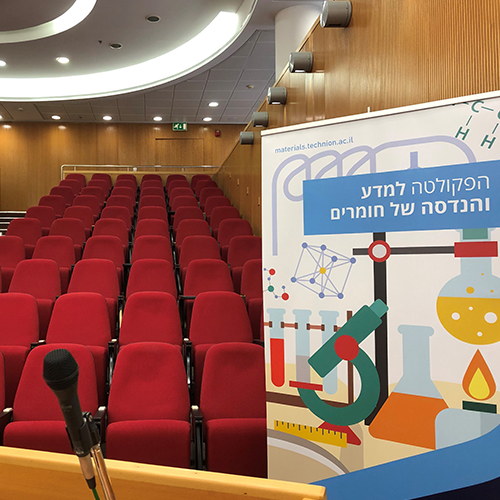
Ms. Yuting Xiao - M.Sc. Candidate
06/10/2024
ZOOM
14:30 - Jerusalem time / 19:30 - Beijing time
Microwave dielectric ceramics are widely used for communication applications. Their key attributes are: 1) the dielectric constant, required to be as low as possible to shorten the time delay in information transition; 2) a high-quality factor, required to reduce dielectric loss and further enhance frequency selectivity; and 3) a near-zero temperature coefficient of resonant frequency τf, required to be stable in a wide temperature range.
Alumina (Al2O3) is a good candidate for millimeter-wave dielectric ceramic devices due to its ultrahigh quality factor (Qf ~ 333,000 GHz) and a low dielectric constant (εr~ 9.6), despite a negative temperature coefficient of resonant frequency (τf ~ -60 ppm/ºC). To balance the τf, TiO2 is introduced to form a twophase material and make τf close to zero.
We systematically investigated the role of TiO2 on sintering and microstructure, and on the microwave properties of Al2O3. Processing alumina with 7.5 wt% TiO2 at 1400ºC for 8 hrs resulted in the optimum properties (εr = 10.73, Qf = 126,347 @f=13.814GHz). Subsequent annealing further eliminated the Al2TiO5 phase and then improved τf to a value near zero. By extending the investigation to a wide range of alumina particle sizes, we found that α-alumina particles with a diameter of 150nm are superior to 2 μm diameter particles, and superior to smaller γ-alumina particles in terms of densification and properties. We analyzed the evolution of the microstructure and its contribution to the dielectric properties using X-ray diffraction, scanning electron microscopy, differential scanning calorimetry, and dielectric measurements
in the GHz frequency range, which shed light on the mechanism of property optimization.


